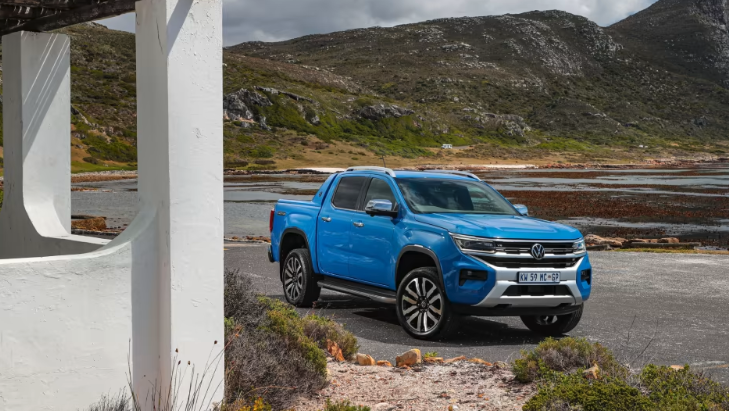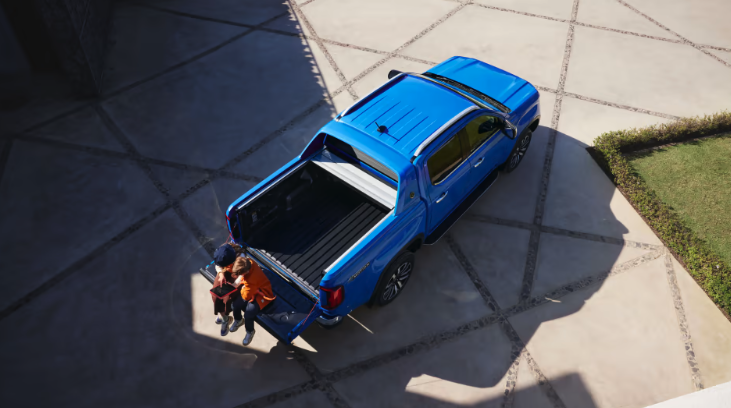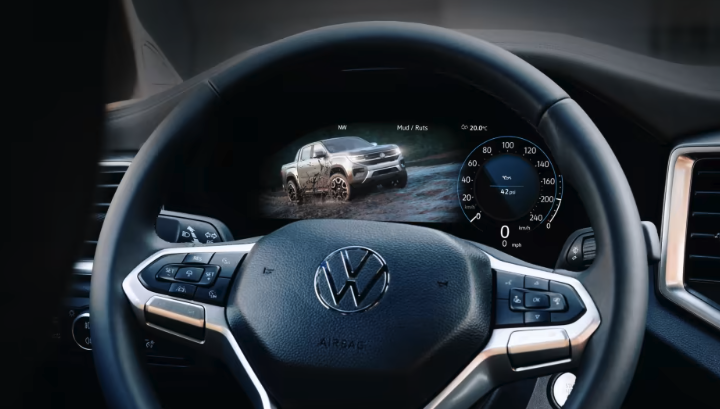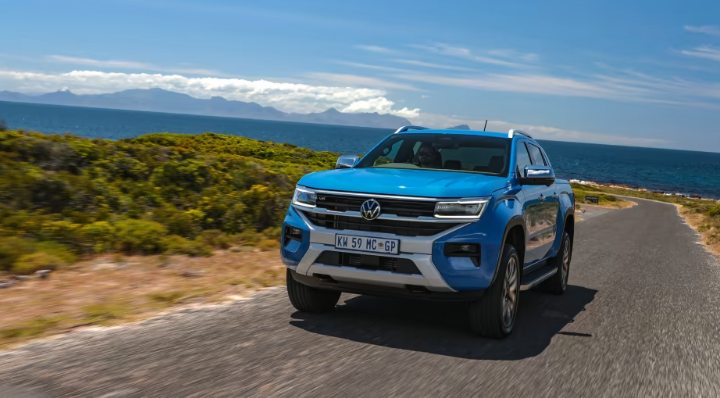Summit appeal with new Amarok
/It’s still built to work, but NZ-spec seems set to push for family-friendly play.
EXPECT a four-prong premium push from the Ranger-twinned Volkswagen Amarok, with two models in four-cylinder twin turbo and the others sticking with V6.
Volkswagen here has yet to confirm exact trims or a launch date – Australia talking up April could be a clue – and there’s talk pricing is such a point of vexation the first shipment will likely be on the water before stickers are settled.
Amarok is an asset of the VW commercial line, separated from the car division, yet that’s a mere in-house demarcation.
It’ll continue to sell alongside the make’s passenger cars and will fit even more comfortably there, as this time Amarok is configured even more strongly to attract those who argue they need a ute for work, but are just as likely thinking about its use for family and weekend fun.
So though it still configures in cab-chassis and single-cab, plus rear-drive, we’ll only see it in dual cab automatic four-wheel-drive, with same powertrains as Ranger here in identical tune – so, a 155kW/ 505Nm biturbo four and a 3.0-litre single turbo V6, with 184kW and 600Nm of torque. The latter should be the favourite, given that VW’s previous, 200kW/580Nm V6 turbodiesel, has been the Kiwi market staple for the past four years.
Everything is well-specced. LED headlamps, adaptive cruise control, lane-keeping aids, rear parking sensors, speed-limit notification, wireless phone charging and nine airbags (five more than the previous Amarok) appear to be standard fare.
The V6s will again provision to the Aventura (pictured today), which maintains flagship status above the next step down, the new-to-VW PanAmericana.
Thinking of the Aventura broadly being an equivalent to the Ranger Platinum – also releasing in April, as a limited count (albeit 600 unit) offer – seems fair: Even though it also has a four-wheel-drive transmission, with a locking differential at the rear, and retains good off-road performance, it’s also plush and, like Platinum, rides on 20-inch hoops, the largest provisioned by either brand ex-factory, with road-tuned suspension and tyres.
PanAmericana, being more tuned to off-roading with Goodyear Wrangler all-terrain tyres and softer suspension, but also having some upmarket touches, including leather seating, is conceivably Germany’s Ranger Wildtrak.
The strategy still leaves VW with no outright foil for the Ranger Raptor – nor is it likely to achieve one unless Ford u-turns on its current policy of restricting its speciality model with its trick Fox suspension and Ford US-supplied petrol 292kW/583Nm V6 to the Blue Oval corral.
The line’s international press launch that’s been running in South Africa has given a good look at the model; it’s been the source for this info and images. Everything related by VW reinforces that while clearly spun from the Ford Ranger T6.2, Amarok is no badge-engineered doppelganger.
Yes, they share a platform, drivetrains and technology; All now from Ford. But only the roof, glass area, door handles and side-mirror caps are common.
Volkswagen has been able to deliver considerable styling changes otherwise, enough to make it clear there’s an ongoing visual link to its highly distinctive predecessor. Same chiselled face, framed with LED daytime running lights and featuring the company's 'ID. Light' technology. Squared off wheel arches are another carry-over signature.
On the Aventura the front bumper treatment has a silver metallic X-design insert and the brightwork continues through to the door handles and mirrors; even the side step has a polished edge along the side, and the roof rails continue the metallic look.
Aventura also has the 'Sport Bar' that adds a more dynamic look to the cab's rear and load bed. Access to the latter is made easier by a tailgate that is much lighter than that of the previous Amarok.
Its load area can accommodate a Euro pallet, while the lashing eyes can handle 400kg tensile load – that’s Ford familiar, of course. Likewise the finishing touches of six load-lashing rings with a tensile load rating of 400kg, a track system incorporating four moveable clamps each with a 250kg limit, LED tray lighting and, at Aventura level, an electrically operated tonneau cover for the load bed. It can be opened or closed via a button on the dashboard or with the key, though only when the truck is parked. A high-power electrical outlet in the load bed doesn’t feature, but is planned, according to launch event information.
Regardless of which version is chosen, the cabin will, at a minimum, feature an eight-inch digital instrument cluster and a 10.1-inch vertical touchscreen. With Aventura, there’s a 12.3-inch instrument screen and a 12-inch portrait-style touchscreen. Again, that’s Ford hardware, but VW has implemented its own infotainment software and bespoke graphics. Including a proper representation of a tachometer on the dash.
Whereas Ranger’s functions are all touch-operated, VW has sorted a bank of physical buttons along the base of the screen to provide easy access to functions such as volume, driving modes and climate settings. Quirkily, though, temperature adjustment requires a user to press the display rather than adjusting a dial. There is connectivity for Apple CarPlay and Android Auto. A wireless charging pad is included, as are both types of USB charge ports.
The steering wheel is all VW and with physical buttons and not the haptic setup as per the passenger cars. Ford’s gear selector remains, with a movement bound to intrigue. Aventura has 10-way electrically adjustable front seats. The improvements to legroom that Ranger users have noticed also implement here, though in Amarok the middle seat is said to be compromised due to the size and design of the centre console. Both outer rear seats have ISOFIX child seat anchor points.
Going to the Ford platform means a 175mm increase in wheelbase, which should mean better on-road comfort and stability, and more minimal overhangs for better ability when off the beaten track. The approach angle is 30 degrees, while the departure angle measures 26 degrees.
As in the Ford twin, the six-cylinder is also linked to a permanent all-wheel-drive system with selectable terrain-specific modes - when you select these via a dial on the console, the vehicle makes all the hardware selections for you, including the transfer case operation and differential locks. The four-cylinder diesels feature electronically selectable part-time set-ups.
The much-admired ZF eight-speed transmission of the old line has been retired for Ford’s 10-speed; a shift that also sacrifices the previous edition’s steering paddle shifters. Same as with mainstream Ranger; only Raptor has those.
Maximum payload has also increased, from one tonne to just under 1.2 tonnes, there’s again a 3500kg braked towing capacity, while VW says the permissible total weight of vehicle and trailer has increased from six to 6.5 tonnes.
Whether the engines are prescribed for AdBlue has yet to be explained. Regardless it has been designed for 180 markets, Ranger here doesn’t require that, because NZ takes it in a configuration designed for Australia, where emissions regulations are relatively lax; so it aims to meet Euro 5. Conceivably, though, Amarok might be tuned for Euro 6, in which case it would conceivably have need for the urea supplement.
VW chose to launch in South Africa because that’s where Amarok is now being built. The Gauteng factory is actually a Ford facility. The old Amarok mainly came from VW’s General Pacheco plant in Argentina, though for a time some V6s were out of Hannover, Germany. Production from Gauteng begins in January.























